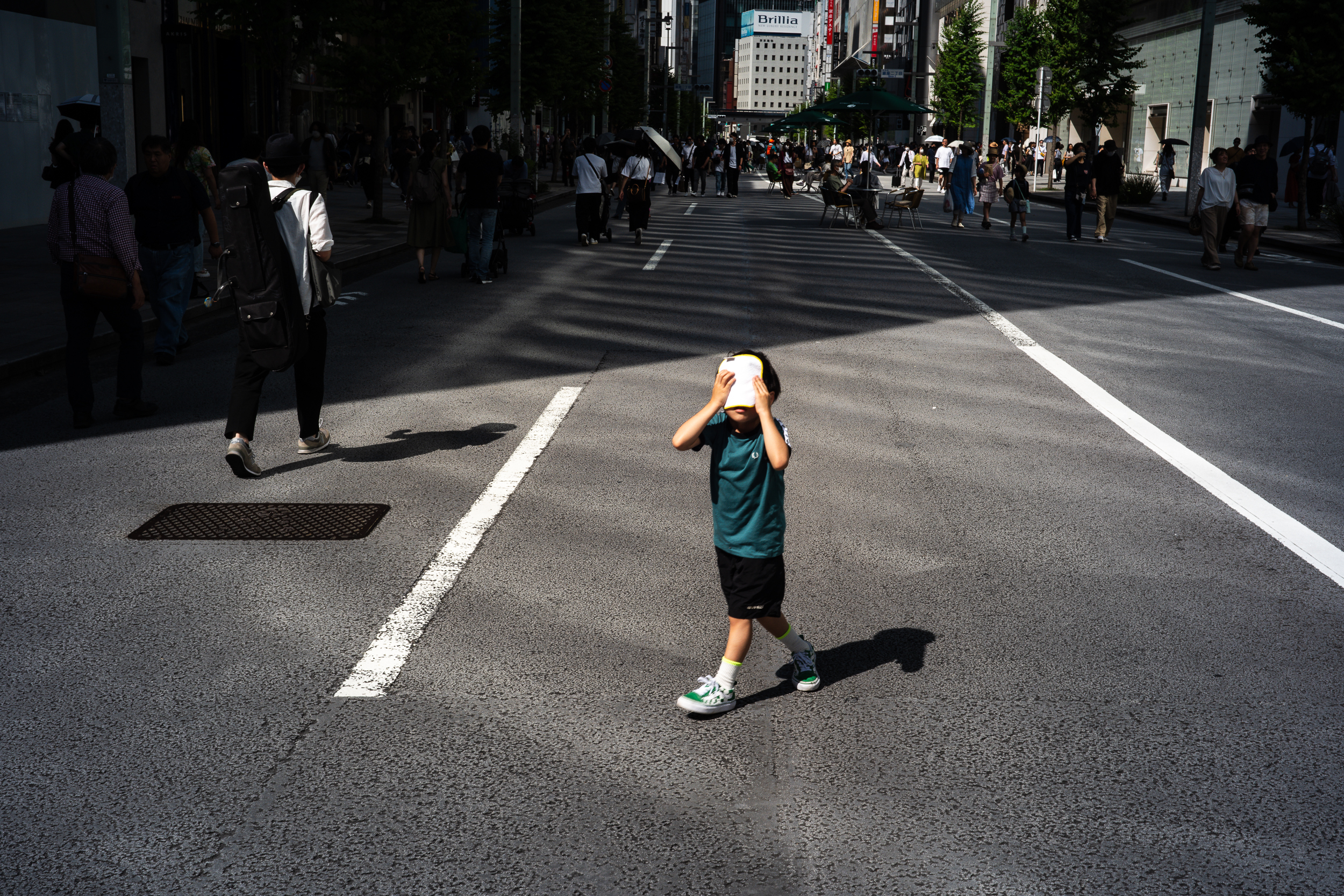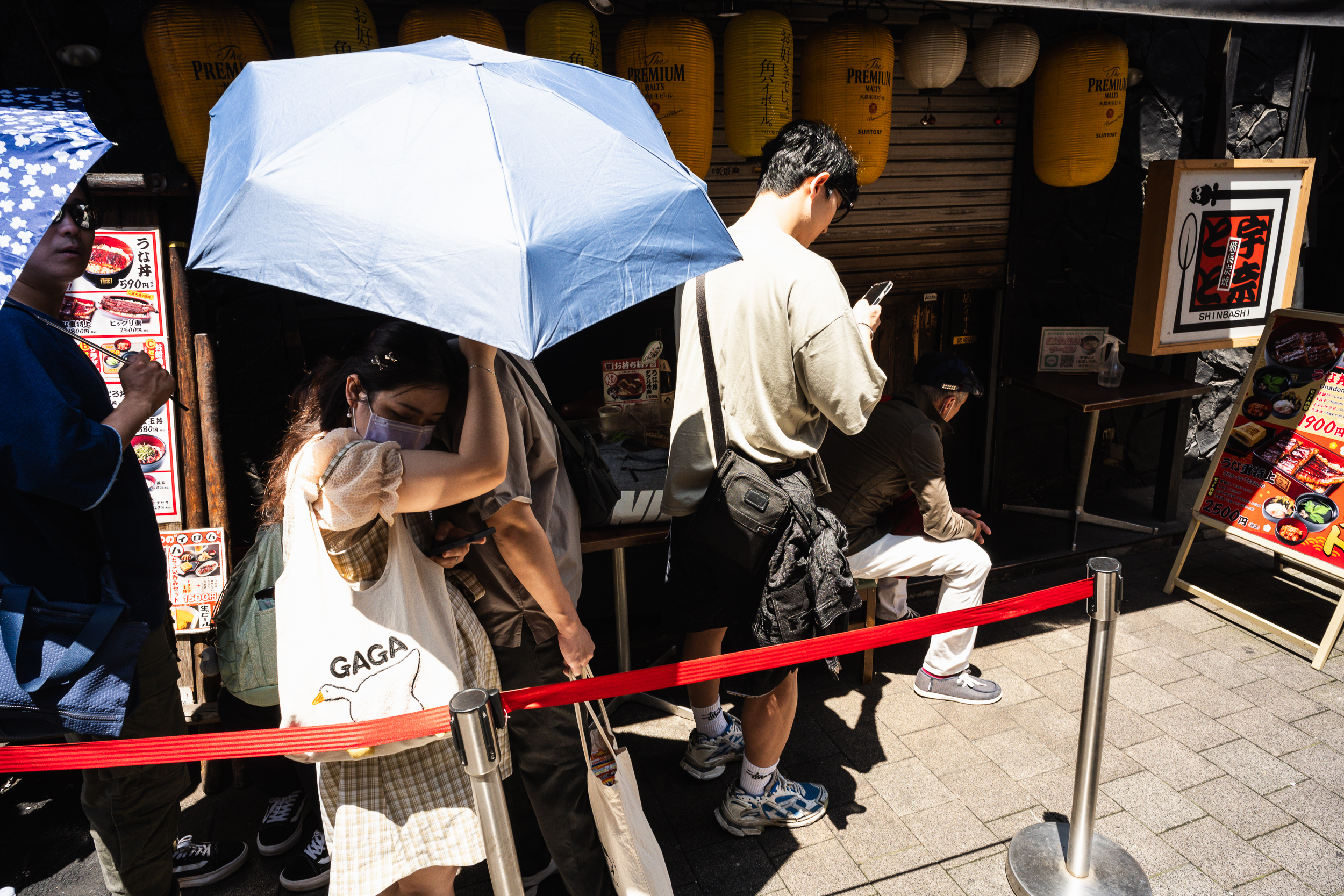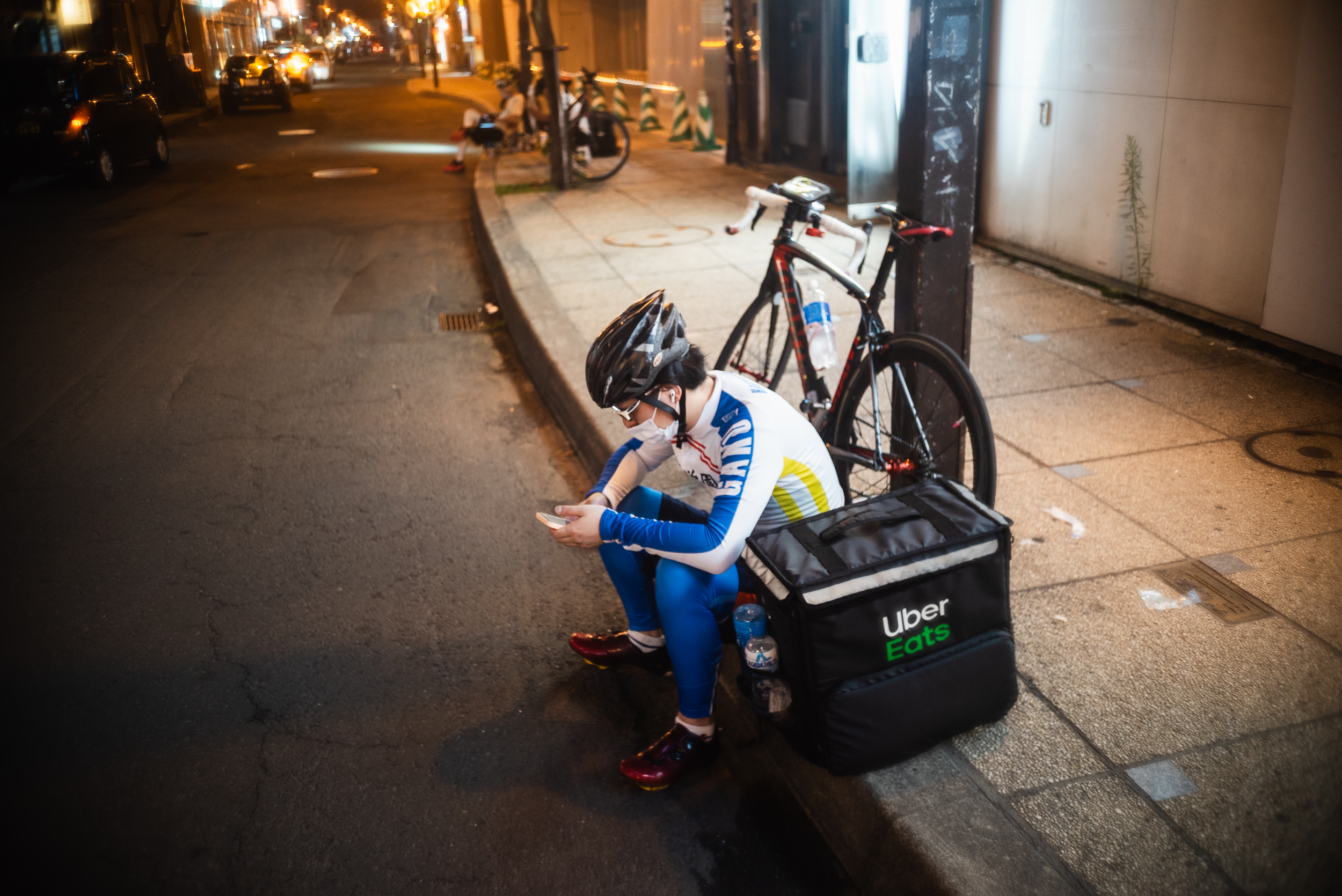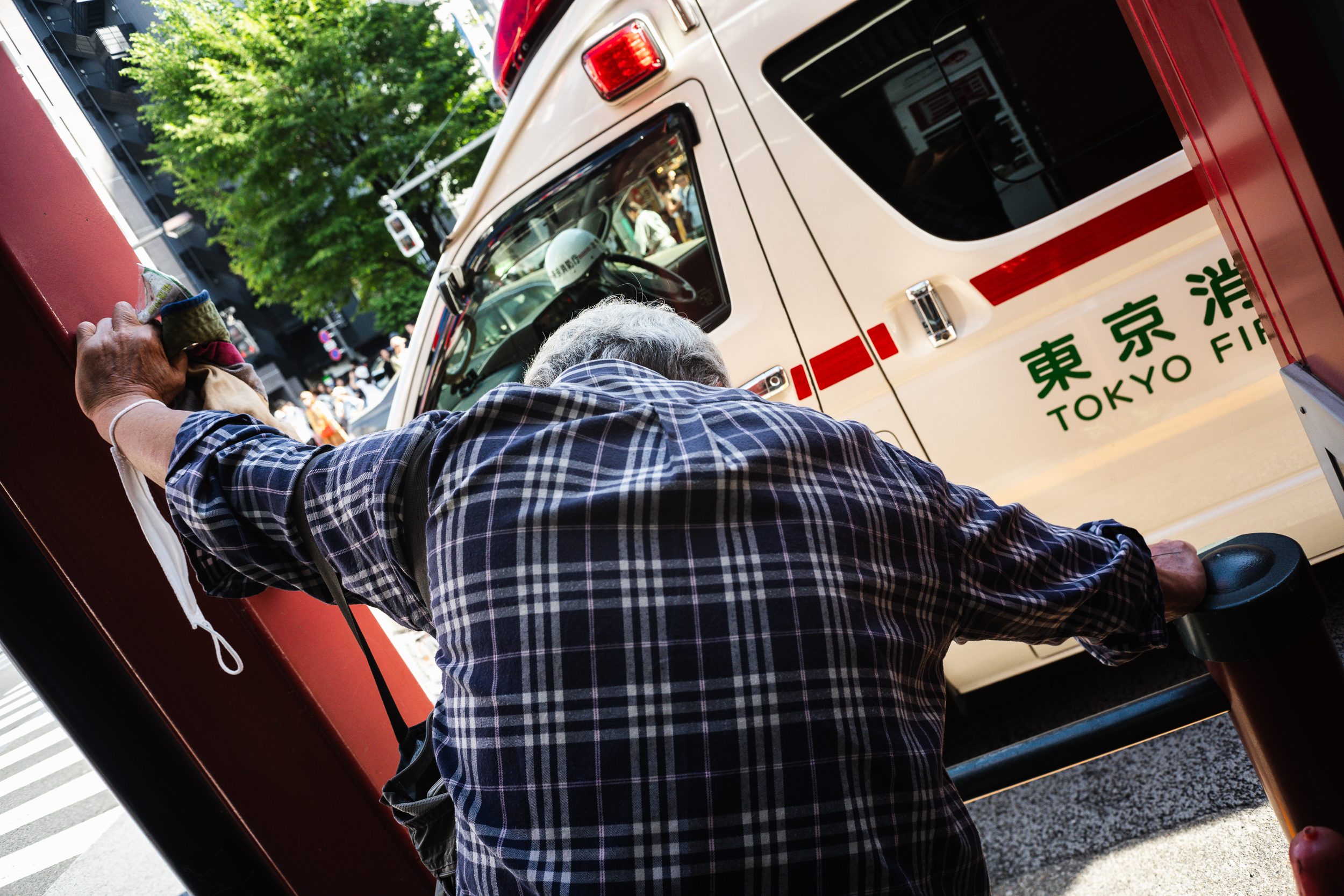Boiling Point
Is extreme weather changing the way Japan shops?
As Japan was baking in record-breaking temperatures last summer, supermarket chain Maruyasu introduced what it called the mōsho-wari, or “extreme heat discount,” to lure shoppers wary of stepping out of their homes into the scorching sun.
On days when Yahoo! Weather’s maximum temperature forecasts for each of the seven Maruyasu stores across Tokyo and neighboring Saitama Prefecture exceeded 35 degrees Celsius as of 9 a.m., the shops offered a discount based on the last digit of the temperature — a price cut of 5% if it was 35 C; 7% if it was 37 C and so on.
“We’ve launched the same campaign this summer to draw back falling customer traffic,” says Yukiko Matsui, one of the two founders of the business, which sells discounted products nearing their expiration dates or with damaged packaging in an effort to tackle food loss.
“Unless we do something, there are days when our stores are really quiet as people refrain from going out shopping in this heat,” she says.
Conventional wisdom suggests summer is a boon for consumption. Demand for cold beverages typically soars, for example, along with ice cream products, not to mention cooling accessories including electric fans as well as UV-protection goods and skincare items. Meanwhile, travel-related spending often surges as consumers take advantage of a traditional holiday season or look for respite from the heat.
This may only be true up to a certain point, however.

Recent studies suggest spending habits can change when the temperature boils to unbearable levels, discouraging customers from leaving their air conditioned homes. Add to that the growing frequency of sudden, localized downpours known as “guerrilla rainstorms” and the rising intensity of seasonal typhoons and it’s clear that climate change is creating a new paradigm for Japan’s consumers.
Ryo Takesawa, a 43-year-old Tokyo resident and father of a toddler, says he’s been cutting down on visits to stores and supermarkets during the daytime over the summer holidays to avoid the sweltering heat.
“It’s risky for my child, too,” he says. “I just don’t feel like walking around in these temperatures.”
Staying indoors
Last year, a total of 1,232 heatstroke alerts were issued nationwide from April to October. These are released by the Japan Meteorological Agency and the Environment Ministry when the wet-bulb globe temperature (WBGT), an index used to measure heat factors such as temperature, humidity and radiant heat, exceeds 33 C.
And starting this year, an even more severe “special” heatstroke alert has been created for when the WBGT index is projected to hit 35 C or above the following day at all monitoring points in a prefecture, suggesting unprecedented heat conditions that could lead to serious health problems — basically meaning: don’t go out unless it’s absolutely necessary.
So far, no such alerts have been issued. But an upward trend in temperatures brought about by climate change means that might not remain the case for long.
“Until recent years, hot summers were considered a positive for consumption,” says Yoshiki Shinke, senior executive economist at Dai-ichi Life Research Institute.
“But that’s when we were experiencing relatively moderate summers,” he says. “I believe extremely hot temperatures could have negative effects, especially since weather forecasts have greatly improved in accuracy and the government is actively warning people of the risks of heatstroke.”
One of the primary expenses that weighs on households during summer is electricity bills. As those costs rise, people are more likely to cut back on other spending, and the increased financial burden can lead to a delayed fall in consumption.
The government announced in June that it will temporarily reintroduce utility bill subsidies for the months of August, September and October. “But that means there will be no relief in July, which is right in the middle of summer,” Shinke says. Moreover, the charges for August will be billed in September.
“It’s uncertain whether this will effectively function as emergency support during the season,” he adds.
Shinke also says attention should be paid to the rise in vegetable prices due to poor crop yields amid the heat. According to data the agriculture ministry released on Aug. 14, retail prices for potatoes were up by 37%, onions by 32%, cucumbers by 31% and carrots by 15% compared to an average year.
Meanwhile, last year’s heat wave and an influx in overseas visitors on the back of a tourism rebound has seen a shortage of rice, leading to a surge in prices of the food staple.
Price hikes of essential vegetables and grains can suppress purchasing power, which may further dampen overall consumption and negatively impact consumer sentiment. Last year, for example, personal consumption as a component of gross domestic product for the July-September period decreased by 0.2% compared with the previous quarter.
Toru Ishizuka, a leek farmer in Ibaraki Prefecture, says excessive heat stunts the development of produce, a phenomenon observed last summer and this summer, especially when the mercury climbs above 35 C.
“Based on my own experience, when temperatures exceed 25 C, growth slows down; when it goes over 30 C, it seems to halt, and when it surpasses 35 C, it feels like the leeks start to wither.”
Ishizuka says he is looking forward to an upcoming typhoon set to bring much needed rainfall to his region, although such storms do have their downsides: “Strong winds could bend the leeks.”
Heat and hunger
A 2021 study examining the links between temperature and food intake using nearly 1 million purchasing records from China found that a 1 C increase in temperature would cause a 0.11% decrease in food intake, amounting to $4.2 million in daily food expenditures nationwide.
“Our results indicate that a higher temperature would reduce energy demand for body thermoregulation, resulting in less food intake,” the report, published in the journal Weather, Climate, and Society, said.

“Both extreme high and low temperatures can cause disutility. Therefore, the consumers who still want to satisfy their needs for food intake feel compelled to alter their willingness to pay under the extreme temperature events.”
While the article linked temperature fluctuations to changes in food consumption, a report released last November by researchers Yoshiaki Hachiya and Kyouka Haga found that extreme heat had a more noticeable impact on consumer behavior in Japan than total expenditure.
“It just hit me that summers are becoming unbearably hot, and I felt that must naturally translate to less people going out,” says Hachiya, a senior researcher at the Development Bank of Japan’s Research Institute of Capital Formation.
Combining 10 years’ worth of daily communication ministry data on household budgets for July and August and JMA’s temperature statistics, Hachiya and Haga categorized summer days into “extremely hot days” (with maximum temperatures of 35 C or higher), “very hot days” (with temperatures between 30 C and 35 C) and “normal days” (with temperatures below 30 C).
Comparing consumption expenditures, they found that spending on fruit, ice cream and beverages increased on extremely hot days compared with very hot and normal days. Meanwhile, golf fees decreased compared with hot days, and spending on cultural facilities such as museums grew, suggesting that people tend to avoid outdoor leisure activities during excessive heat.
Case in point: Hachiya’s son is a member of his school’s soccer club, but practice this summer has been frequently halted when temperatures reach levels considered unfit for outdoor sport.

“The impact is obviously not just affecting club activities but outdoor recreation in general, including beer gardens and music festivals,” he says.
When looking at overall expenditures, however, the breakdown came to ¥6,703 on extremely hot days, ¥6,518 on very hot days and ¥6,529 on normal days, with no statistically significant differences observed between them.
“In other words, extreme heat does not lead to a clear increase or decrease in overall consumption,” Hachiya says. “Rather, it causes changes in the types of items and products people spend on.”
Guerrilla rainstorms
Extreme weather during the summer isn’t just limited to heat, and at the moment greater disruptions are being seen from heavy downpours growing in frequency with the impact of global warming.
According to Hachiya’s report, outlays on days with torrential rain or storms were noticeably lower at ¥4,937. While a substantial portion of the reduced spending is likely to be redistributed to other days, those on travel and other events may be partly curtailed.
“We’ve been seeing frequent thunderstorms and guerrilla rainstorms,” Hachiya says. “It’s statistically confirmed that consumption clearly decreases on days with such weather disruptions.”
Erratic meteorological conditions could also be a blessing for some services, however. Haga, Hachiya’s colleague and a fellow researcher at the Development Bank of Japan, says she’s had difficulty booking taxis through apps this summer.
“I have begun using taxis more frequently,” she says. “But it takes more than 10 or even 15 minutes now to find one.”
Based on data of credit card use by industry type in the Tokyo area between 2019 and 2023, the Japan Weather Association analyzed the impact of daily weather conditions on consumption.
In the January-March quarter, for example, a 10-millimeter increase in daily precipitation led to an approximately 6% reduction in daily consumption at shopping centers, amusement parks, department stores, supermarkets, drugstores, clothing stores, furniture/home centers, electronics stores and on highways.
In the same quarter, a 10-mm increase in daily precipitation led to an 8% to 10% increase in consumption in the transportation and traffic (mainly taxis) and lodging (mainly business hotels) sectors.
Domino’s Japan, the nation’s largest pizza delivery chain, says delivery volume grows during downpours.
“Since the end of the rainy season, there have been many instances of guerrilla rainstorms due to the extreme heat, and it’s a fact that the delivery rate has increased as a result of these heavy rains,” says Ayumi Matsubara, an executive officer at Domino’s Japan.
“When it rains, people tend to stay home, leading to increased demand for delivery services and resulting in more delivery orders compared with takeout.”

Rain or shine, the summer of extremes is disrupting shopping behavior in unprecedented ways, a new reality set to impact the consumer market for years to come as harsh weather conditions become the norm.
Meanwhile, Takesawa, the Tokyo resident and father, says when he takes his son for walks during the day, he keeps them within 30 minutes and chooses paths in the shade.
“I’d like to stay home as long as the child allows, but that’s not always possible,” he says. “But when we go out, I inevitably end up spending on something.”
Based on data of credit card use by industry type in the Tokyo area between 2019 and 2023, the Japan Weather Association analyzed the impact of daily weather conditions on consumption.
In the January-March quarter, for example, a 10-millimeter increase in daily precipitation led to an approximately 6% reduction in daily consumption at shopping centers, amusement parks, department stores, supermarkets, drugstores, clothing stores, furniture/home centers, electronics stores and on highways.
In the same quarter, a 10-mm increase in daily precipitation led to an 8% to 10% increase in consumption in the transportation and traffic (mainly taxis) and lodging (mainly business hotels) sectors.
Domino’s Japan, the nation’s largest pizza delivery chain, says delivery volume grows during downpours.

“Since the end of the rainy season, there have been many instances of guerrilla rainstorms due to the extreme heat, and it’s a fact that the delivery rate has increased as a result of these heavy rains,” says Ayumi Matsubara, an executive officer at Domino’s Japan.
“When it rains, people tend to stay home, leading to increased demand for delivery services and resulting in more delivery orders compared with takeout.”
Rain or shine, the summer of extremes is disrupting shopping behavior in unprecedented ways, a new reality set to impact the consumer market for years to come as harsh weather conditions become the norm.
Meanwhile, Takesawa, the Tokyo resident and father, says when he takes his son for walks during the day, he keeps them within 30 minutes and chooses paths in the shade.
“I’d like to stay home as long as the child allows, but that’s not always possible,” he says. “But when we go out, I inevitably end up spending on something.”

